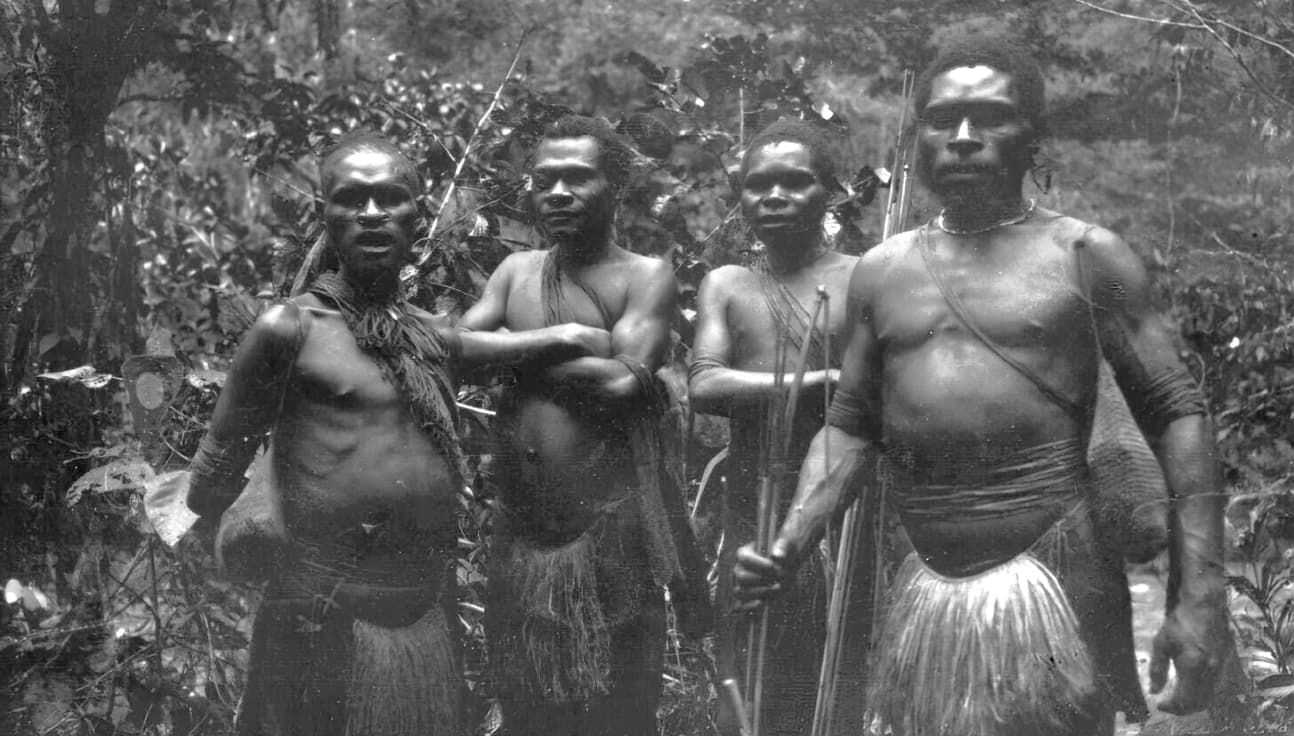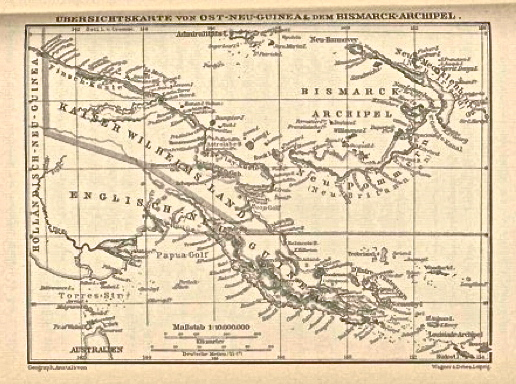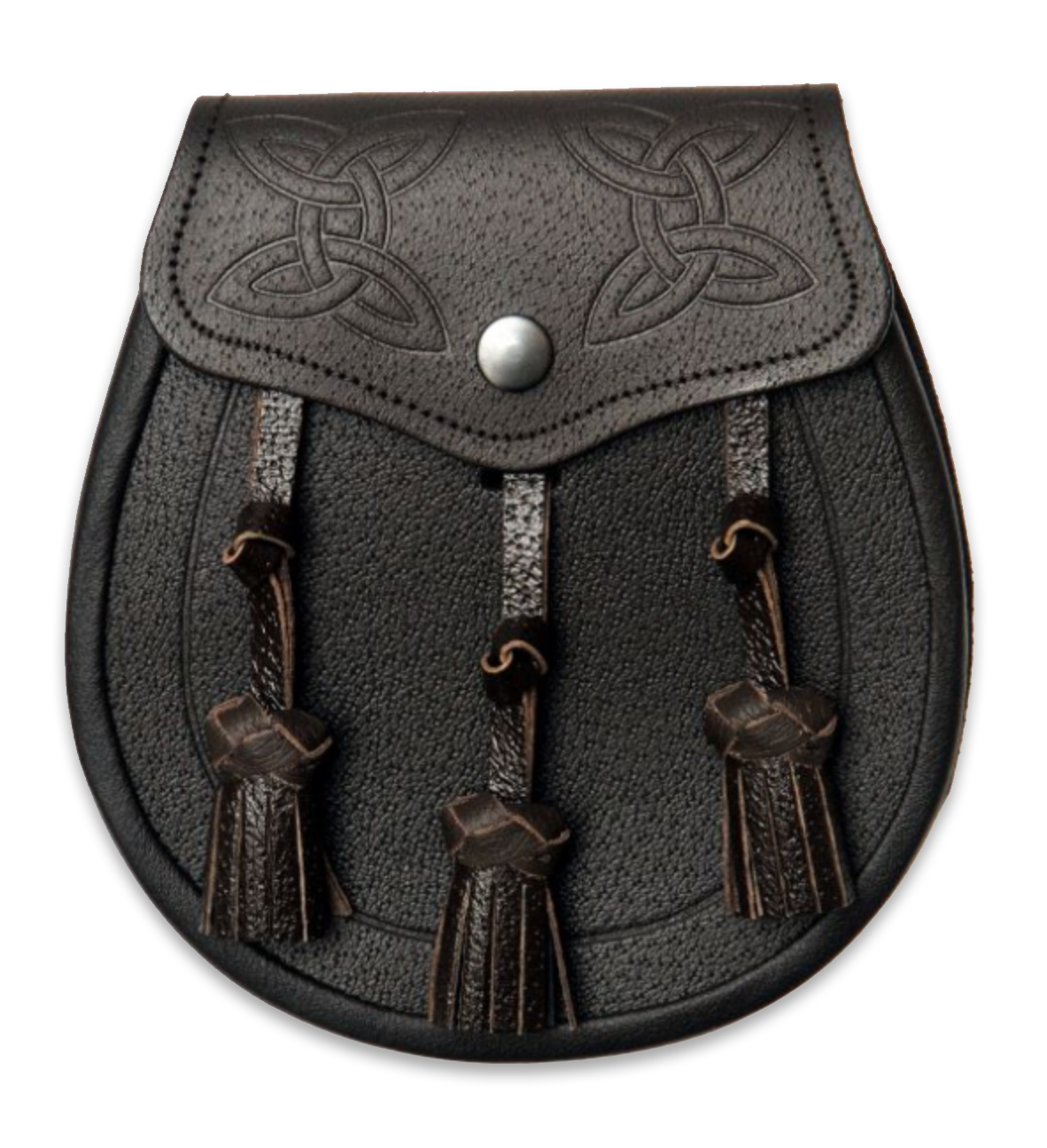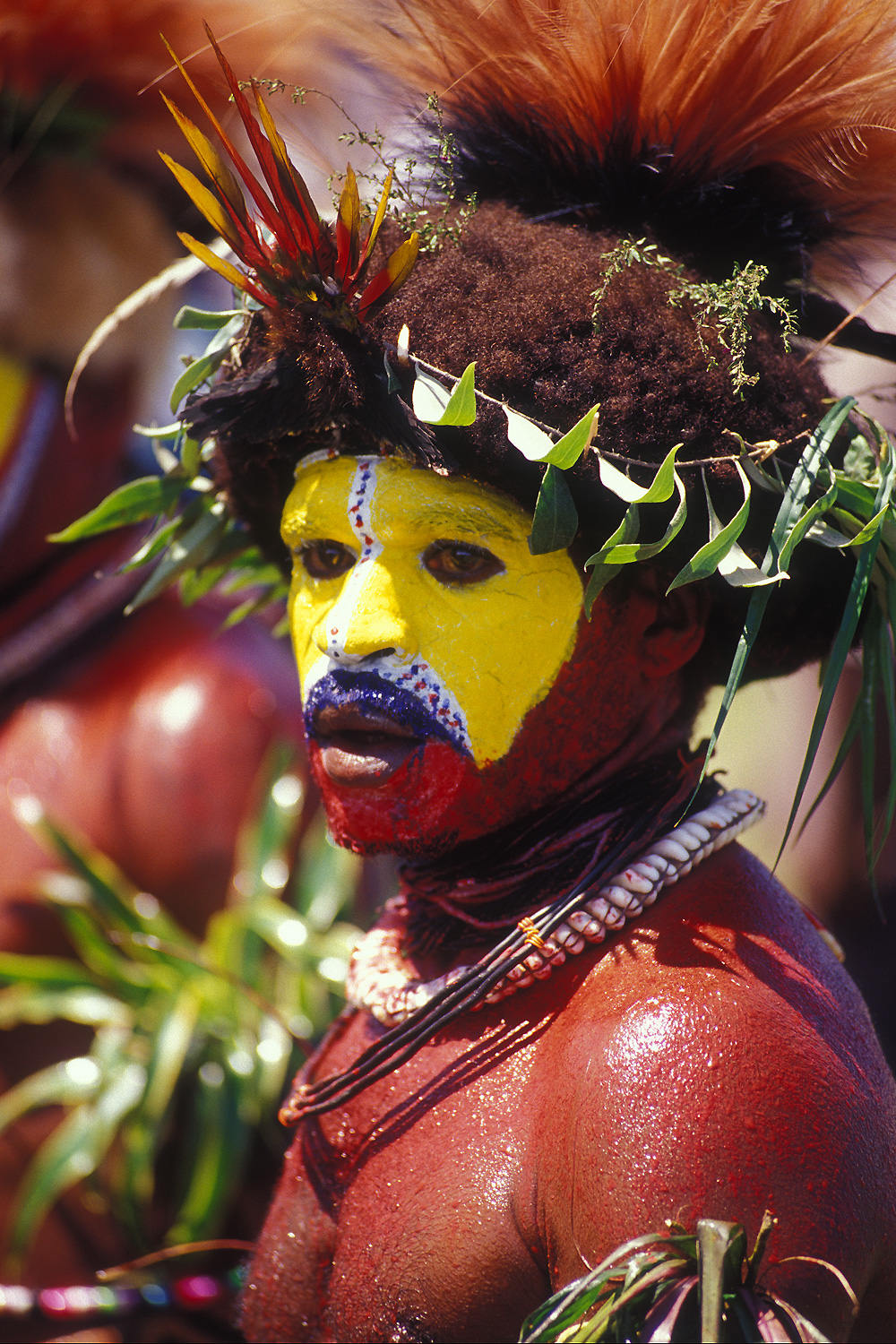|
Angu
The Angu or Änga people, also called Kukukuku (pronounced "cookah-cookah"), are a small group speaking a number of related languagesEthnologue: Languages of the World, Sixteenth Edition, M. Paul Lewis, editor; and living mainly in the high, mountainous region of south-western Morobe, a province of Papua New Guinea. Even though they are a short people, often less than five feet tall, they were feared for their violent raids on more peaceful villages living in lower valleys. An account of some of the first contact between the Angu and westerners is described vividly by J. K. McCarthy in his 1963 book ''Patrol into Yesterday: My New Guinea Years''. At the time, despite the high altitude and cold climate of their homeland, the Änga wore limited clothing, including grass skirts, with a piece similar to a sporran, and cloaks made from beaten bark, called ''mals''. Today, four of the Änga languages are almost extinct, but the largest tribe, the Hamtai, are thriving, with a popula ... [...More Info...] [...Related Items...] OR: [Wikipedia] [Google] [Baidu] |
Angan Languages
The Angan or Kratke Range languages are a language family, family of the Trans–New Guinea languages in the classification of Malcolm Ross (linguist), Malcolm Ross. The Angan languages are clearly valid as a family. They were first identified as such by J. Lloyd and A. Healey in 1968; Wurm (1975) classified them as Trans–New Guinea. Glottolog treats Angan as a separate or unclassified family, ignoring further evidence. The languages are spoken in the Kratke Range of Eastern Highlands Province and adjoining areas of Gulf Province and Morobe Province. Languages Ross (2005) classifies the languages as follows: *Angan ** Angaatiha language, Angaatiha ** Angan proper (Nuclear Angan) *** Angan branch A: **** Hamtai language, Hamtai (Kapau) **** Kamasa language, Kamasa **** Kawatsa language, Kawatsa **** Menya language, Menya **** Yagwoia language, Yagwoia *** Angan branch B: **** Akoye language, Akoye (Lohiki) **** Yipma language, Yipma (Baruya) **** Safeyoka language, Safeyoka ... [...More Info...] [...Related Items...] OR: [Wikipedia] [Google] [Baidu] |
Morobe Province
Morobe is a province on the northern coast of Papua New Guinea. The provincial capital and largest city is Lae. The province covers 33,705 km2, with a population of 674,810 (2011 census), and since the division of Southern Highlands Province in May 2012 it is the most populous province. It includes the Huon Peninsula, the Markham River, and delta, and coastal territories along the Huon Gulf. The province has nine administrative districts. At least 101 languages are spoken, including Kâte and Yabem language. English language, English and Tok Pisin are common languages in the urban areas, and in some areas pidgin forms of German are mixed with the native language. History Nomenclature The Morobe Province takes its name from former German administration center of ''Morobe'' southeast of the Lae. Under German administration, Morobe (meaning post) was named Adolfhafen for the German Deutsch Neuguinea-Kompagnie's Adolf von Hansemann and German word ''hafen'' (''heɪfən'') meanin ... [...More Info...] [...Related Items...] OR: [Wikipedia] [Google] [Baidu] |
Papua New Guinea
Papua New Guinea, officially the Independent State of Papua New Guinea, is an island country in Oceania that comprises the eastern half of the island of New Guinea and offshore islands in Melanesia, a region of the southwestern Pacific Ocean north of Australia. It has Indonesia–Papua New Guinea border, a land border with Indonesia to the west and neighbours Australia to the south and the Solomon Islands to the east. Its capital, on its southern coast, is Port Moresby. The country is the world's third largest list of island countries, island country, with an area of . The nation was split in the 1880s between German New Guinea in the North and the Territory of Papua, British Territory of Papua in the South, the latter of which was ceded to Australia in 1902. All of present-day Papua New Guinea came under Australian control following World War I, with the legally distinct Territory of New Guinea being established out of the former German colony as a League of Nations mandate. T ... [...More Info...] [...Related Items...] OR: [Wikipedia] [Google] [Baidu] |
Lonely Planet
Lonely Planet is a travel guide book publisher. Founded in Australia in 1973, the company has printed over 150 million books. History 20th century Lonely Planet was founded by married couple Maureen Wheeler, Maureen and Tony Wheeler. In 1972, they embarked on an overland trip through Europe and Asia to Australia following the route of the Oxford and Cambridge Far Eastern Expedition. The company name originates from the Mondegreen, misheard "lovely planet" in a song written by Matthew Moore. Lonely Planet's first book, ''Across Asia on the Cheap'', had 94 pages; it was written by the couple in their home. The original 1973 print run consisted of stapled booklets with pale blue cardboard covers. Wheeler returned to Asia to write ''Across Asia on the Cheap: A Complete Guide to Making the Overland Trip'', published in 1975. The Lonely Planet guide book series initially expanded to cover other countries in Asia, with the India guide book in 1981, and expanded to the rest of th ... [...More Info...] [...Related Items...] OR: [Wikipedia] [Google] [Baidu] |
Sporran
The sporran (; Scottish Gaelic for ' purse'), a traditional part of male Scottish Highland dress, is a pouch that functions as a pocket for the kilt. Made of leather or fur, the ornamentation of the sporran is chosen to complement the formality of dress worn with it. The sporran is worn on a leather strap or chain, conventionally positioned in front of the groin of the wearer. Since the traditional kilt does not have pockets, the sporran serves as a wallet and container for any other necessary personal items. It is essentially a remnant of the common European medieval belt-pouch, superseded elsewhere as clothing came to have pockets, but continuing in the Scottish Highlands because of the lack of these accessories in traditional dress. The sporran hangs below the belt buckle; and much effort is made to match their style and design. The kilt belt buckle may be very ornate, and contain similar motifs to the sporran cantle and the sgian dubh. Early sporrans would have been worn su ... [...More Info...] [...Related Items...] OR: [Wikipedia] [Google] [Baidu] |
Hamtai Language
Hamtai (also called ''Hamday'' or ''Kapau'') is the most populous of the Angan languages of Papua New Guinea Papua New Guinea, officially the Independent State of Papua New Guinea, is an island country in Oceania that comprises the eastern half of the island of New Guinea and offshore islands in Melanesia, a region of the southwestern Pacific Ocean n .... It is also known as Kamea, Kapau, and Watut. Dialects are Wenta, Howi, Pmasa’a, Hamtai proper, and Kaintiba. The language was unwritten until 2009. Phonology In Hamtai, there are 14 consonants, 7 vowels, and two tones (rising and falling). Vowels Consonants References Languages of Gulf Province Languages of Morobe Province Angan languages {{papuan-lang-stub ... [...More Info...] [...Related Items...] OR: [Wikipedia] [Google] [Baidu] |
Jean-Pierre Dutilleux
Jean-Pierre Dutilleux (born 13 October 1949) is a Belgian author, activist, and filmmaker known for his work documenting indigenous cultures and environmental issues. Career Over the last forty years, Dutilleux has produced thirty films, including a dozen in the Amazon Rainforest, taken thousands of photographs, and published six books. Dutilleux received an Academy Award nomination for his documentary ''Raoni'', which examines issues surrounding the survival of indigenous Amazonian communities and the rainforest. ''Raoni'' investigates the complex issues surrounding the survival of the remaining indigenous natives of the Amazon Rainforest and the rainforest itself. A citizen of Belgium, Dutilleux earned a Bachelor of Arts degree in French and Literature from Saint Hadelin College in Liege, and later studied law, languages, and economics at the University of Louvain. During his college years, Dutilleux traveled throughout North and South America and developed an interest in ... [...More Info...] [...Related Items...] OR: [Wikipedia] [Google] [Baidu] |
Ethnic Groups In Papua New Guinea
The indigenous population of Papua New Guinea is one of the most heterogeneous in the world. Papua New Guinea has several thousand separate communities, most with only a few hundred people. Divided by language, customs, and tradition, some of these communities have engaged in endemic warfare with their neighbors for centuries. It is the second most populous nation in Oceania, with a total population estimated variously as being between 9.5 and 10.1 million inhabitants. The isolation created by the mountainous terrain is so great that some groups, until recently, were unaware of the existence of neighboring groups only a few kilometers away. The diversity, reflected in a folk saying, "For each village, a different culture", is perhaps best shown in the local languages. The island of New Guinea contains about 850 languages. The languages that are neither Austronesian nor Australian are considered Papuan languages; this is a geographical rather than linguistic demarcation. Of the ... [...More Info...] [...Related Items...] OR: [Wikipedia] [Google] [Baidu] |




